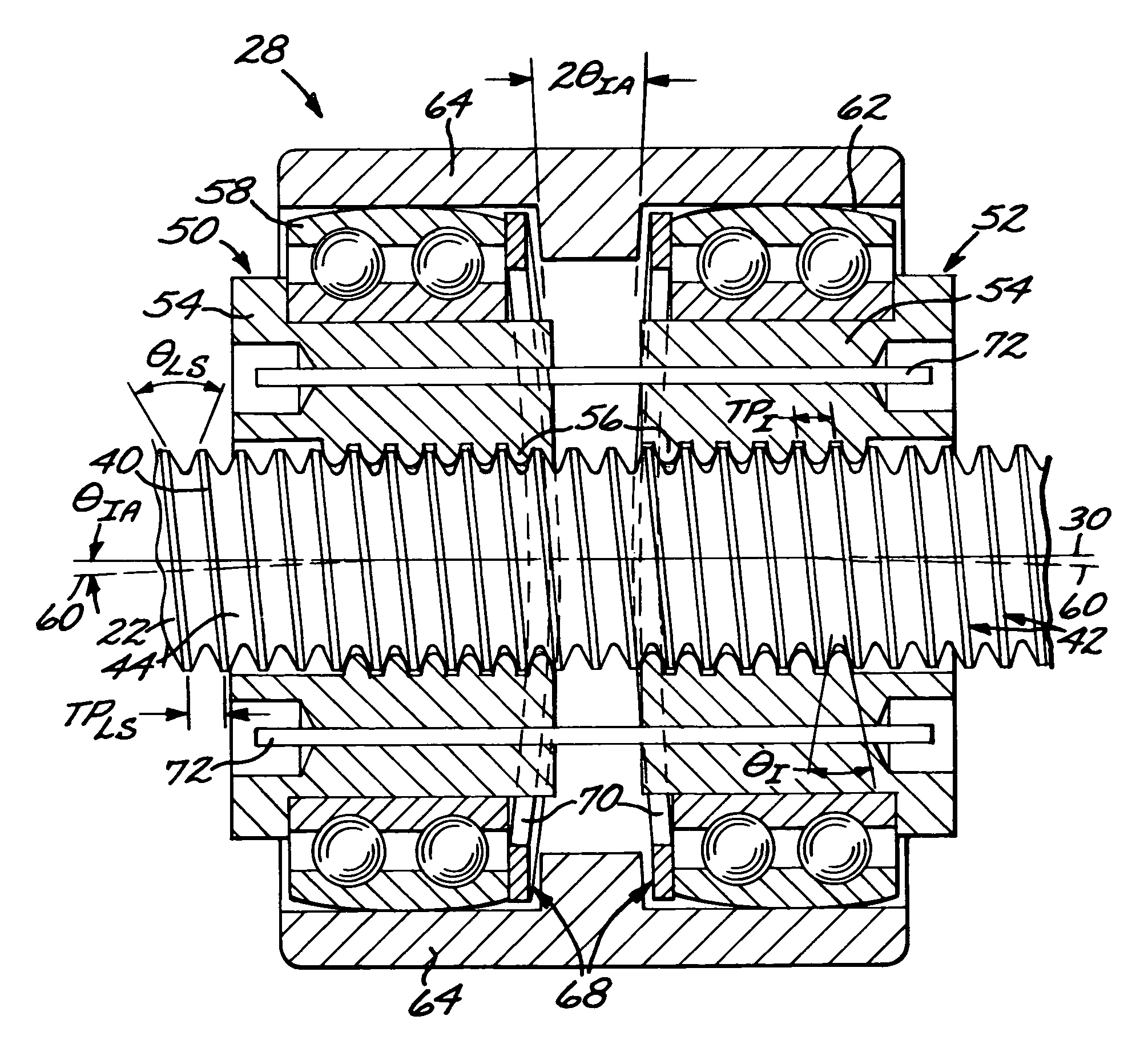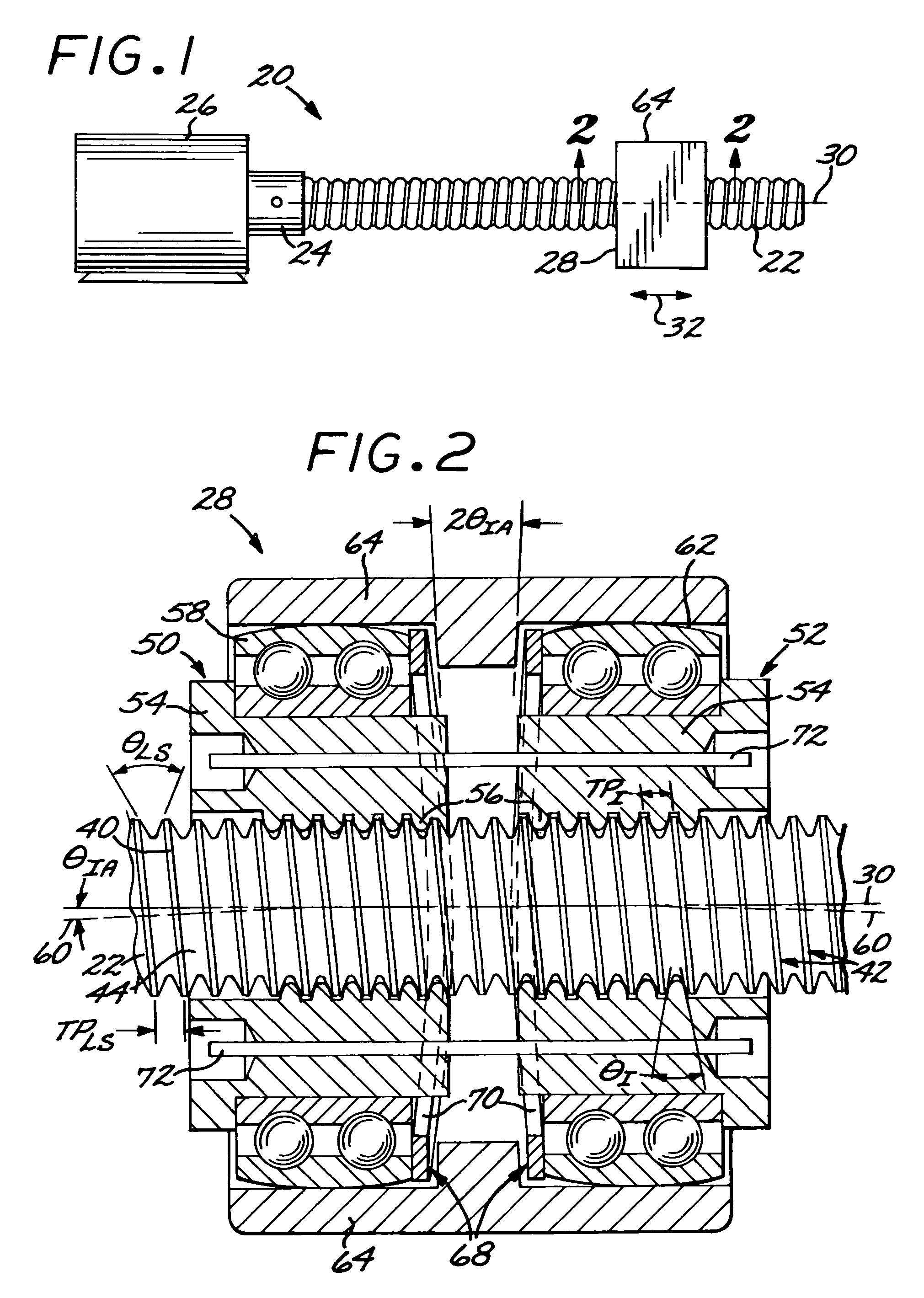Leadscrew mechanical drive with differential leadscrew follower structure
- Summary
- Abstract
- Description
- Claims
- Application Information
AI Technical Summary
Benefits of technology
Problems solved by technology
Method used
Image
Examples
Embodiment Construction
[0017]FIG. 1 depicts a leadscrew mechanical drive 20. The leadscrew mechanical drive 20 includes an externally threaded leadscrew 22 that is driven by a rotational output 24 of a motor 26 or other power source. The motor is preferably a synchronous motor such as a conventional high-speed motor, although other types of motors such as stepper motors may also be used. Preferably and as illustrated, there is no speed-reducing gearbox in the leadscrew mechanical drive between the rotational output 24 and the threaded leadscrew 22. A leadscrew follower structure 28 is threadably engaged to the leadscrew 22. As the motor 26 turns the threaded leadscrew 22 about its rotational leadscrew axis 30, the threaded engagement between the leadscrew follower structure 28 and the leadscrew 22 translates the rotational movement of the leadscrew 22 into linear movement of the leadscrew follower structure 28 in a linear movement direction 32 parallel to the rotational leadscrew axis 30. The leadscrew fo...
PUM
 Login to View More
Login to View More Abstract
Description
Claims
Application Information
 Login to View More
Login to View More - R&D
- Intellectual Property
- Life Sciences
- Materials
- Tech Scout
- Unparalleled Data Quality
- Higher Quality Content
- 60% Fewer Hallucinations
Browse by: Latest US Patents, China's latest patents, Technical Efficacy Thesaurus, Application Domain, Technology Topic, Popular Technical Reports.
© 2025 PatSnap. All rights reserved.Legal|Privacy policy|Modern Slavery Act Transparency Statement|Sitemap|About US| Contact US: help@patsnap.com


